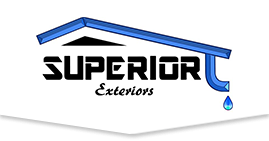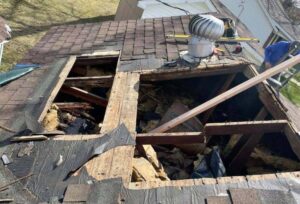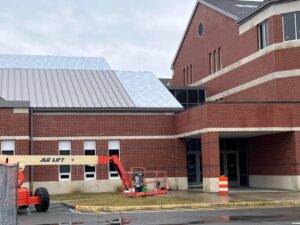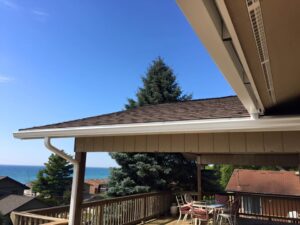Metal roofing has gained immense popularity in recent years due to its durability, energy efficiency, and aesthetic appeal. However, before embarking on a metal roof installation project, it’s essential to understand the various factors that contribute to its cost. In this comprehensive guide, we’ll break down the expenses involved in metal roof installation, helping you make informed decisions and budget effectively for your project.
Introduction to Metal Roof Installation
Metal roofs come in various materials, including steel, aluminum, copper, and zinc, each offering unique benefits and price points. The installation process involves several steps, from preparing the roof deck to securing the metal panels or shingles in place. While metal roofs have a higher upfront cost compared to traditional roofing materials like asphalt shingles, their longevity, and low maintenance requirements often make them a cost-effective choice in the long run.
Factors Affecting Metal Roof Installation Costs
According to our pals at Ace Roofing Company, there are several factors that affect the cost of metal roofing installation.
- Roof Size and Complexity: The size and complexity of your roof significantly impact the installation cost. A larger roof will require more materials and labor, while a complex roof design with multiple angles and features may increase installation time and expenses.
- Choice of Metal Material: The type of metal you choose for your roof will affect the overall cost. Steel is generally the most affordable option, followed by aluminum, while copper and zinc are premium materials with higher price tags.
- Metal Roof Style: Metal roofs come in various styles, including panels, shingles, tiles, and standing seam profiles. Each style has its own installation requirements and associated costs.
- Roof Pitch and Accessibility: Steeper roofs and those with difficult accessibility may require additional safety measures and labor, increasing installation costs.
- Underlayment and Insulation: Proper underlayment and insulation are crucial for ensuring the longevity and energy efficiency of a metal roof. The cost of underlayment materials and insulation will add to the overall project expenses.
- Labor Costs: Labor costs vary depending on factors such as location, labor market conditions, and the experience level of the roofing contractor. Hiring a reputable and experienced installer may result in higher labor costs but can ensure quality workmanship and peace of mind.
- Additional Features and Accessories: Optional features such as skylights, chimneys, vents, and gutter systems will incur extra costs during installation.
Cost Breakdown
Now, let’s delve into a detailed cost breakdown based on national averages and industry estimates:
- Material Costs: On average, the cost of metal roofing materials ranges from $5 to $15 per square foot. This includes the metal panels or shingles, trim, fasteners, and any necessary accessories.
- Labor Costs: Labor costs typically account for 50% to 60% of the total project cost. The average labor cost for metal roof installation ranges from $3 to $8 per square foot. Complex installations or projects in high-cost areas may have higher labor rates.
- Underlayment and Insulation: The cost of underlayment and insulation materials varies depending on the type and quality chosen. Expect to spend around $0.50 to $2 per square foot for underlayment and $1 to $3 per square foot for insulation.
- Additional Expenses: Miscellaneous expenses such as permit fees, disposal of old roofing materials, and any necessary repairs or modifications to the roof deck can add a few hundred to a few thousand dollars to the project cost.
Total Cost Estimate
To calculate the total cost of your metal roof installation, use the following formula:
𝑇𝑜𝑡𝑎𝑙𝐶𝑜𝑠𝑡=(𝑀𝑎𝑡𝑒𝑟𝑖𝑎𝑙𝐶𝑜𝑠𝑡𝑝𝑒𝑟𝑆𝑞𝑢𝑎𝑟𝑒𝐹𝑜𝑜𝑡×𝑅𝑜𝑜𝑓𝐴𝑟𝑒𝑎)+(𝐿𝑎𝑏𝑜𝑟𝐶𝑜𝑠𝑡𝑝𝑒𝑟𝑆𝑞𝑢𝑎𝑟𝑒𝐹𝑜𝑜𝑡×𝑅𝑜𝑜𝑓𝐴𝑟𝑒𝑎)+𝐴𝑑𝑑𝑖𝑡𝑖𝑜𝑛𝑎𝑙𝐸𝑥𝑝𝑒𝑛𝑠𝑒𝑠
TotalCost=(MaterialCostperSquareFoot×RoofArea)+(LaborCostperSquareFoot×RoofArea)+AdditionalExpenses
For example, let’s consider a 2,000-square-foot roof with a material cost of $10 per square foot and a labor cost of $5 per square foot:
𝑇𝑜𝑡𝑎𝑙𝐶𝑜𝑠𝑡=(10×2000)+(5×2000)+𝐴𝑑𝑑𝑖𝑡𝑖𝑜𝑛𝑎𝑙𝐸𝑥𝑝𝑒𝑛𝑠𝑒𝑠
TotalCost=(10×2000)+(5×2000)+AdditionalExpenses
Total Cost = $20,000 + $10,000 + Additional Expenses
Conclusion
In conclusion, the cost of metal roof installation can vary widely depending on several factors, including roof size, material choice, labor rates, and additional features. By understanding these cost factors and obtaining multiple quotes from reputable roofing contractors, you can budget effectively and ensure a successful metal roof installation that enhances the beauty, durability, and value of your home.







